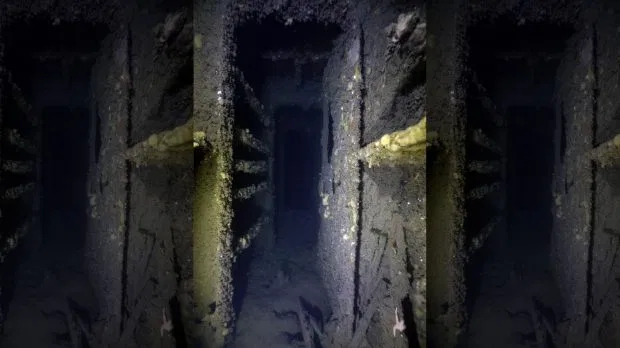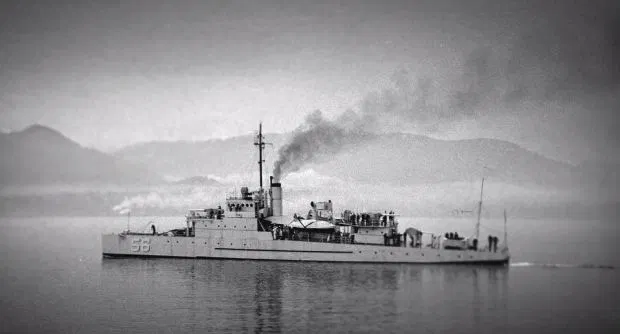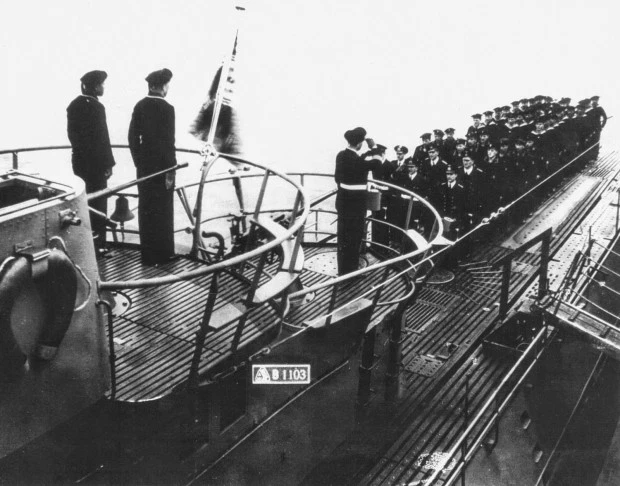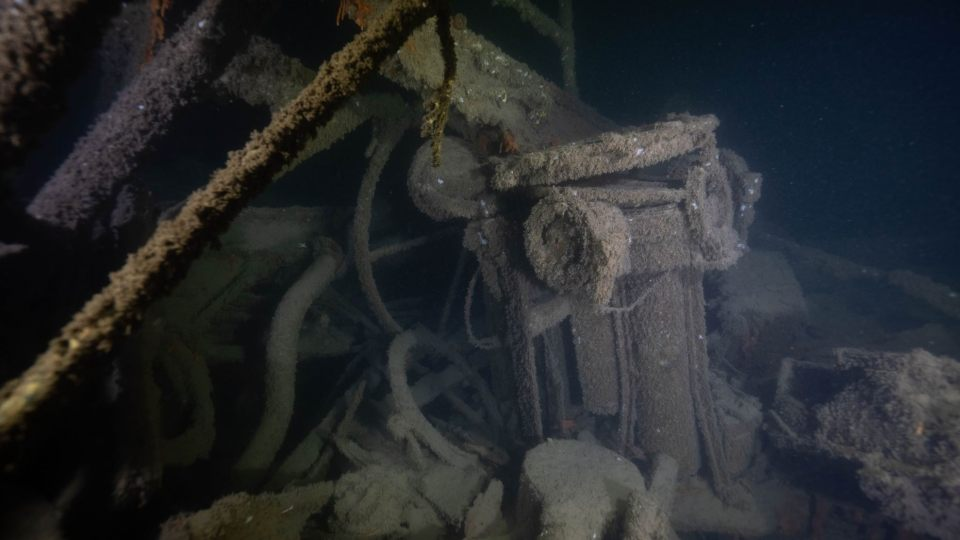Two weeks before VE Day and the final capitulation of the Nazi German forces an order went out, to the U-boat commanders that were still operating around the world’s oceans, to surrender.
However, many of the U-boats ignored the order and continued to engage with Allied forces. On April 23rd, 1945, U-853 attacked and sank the American Navy patrol boat the USS Eagle PE-56.
The Eagle was split in two by the blast from the torpedo and rapidly disappeared under the waves of the North Atlantic, just a few miles off the coast of Maine.
The ship had a crew of sixty-two, and of the two-dozen that made it out before the ship went down just a few managed to survive long enough to be picked up by a destroyer, the USS Selfridge.

The survivors were called the ‘lucky thirteen’ and the loss of the Eagle was officially given as a boiler explosion. It is thought that the Navy were concerned that the news of a Nazi attack so close to the territorial waters of the USA would panic the public.
At the enquiry up to five surviving seamen testified that they had seen the submarine after it had surfaced to record the incident to confirm their ‘kill.’
The men in the water were expecting the Germans to train their machine guns on them and finish the job, but the USS Southridge appeared close on the horizon and the U-boat quickly closed its hatches and disappeared under the sea. The images are from a Smithsonian Channel documentary.
“They wanted to get the heck out of there,” said Eric Breeze, re-telling the story of the incident lived through by his father John Breeze. Machinist’s Mate First Class John Breeze was in the boiler room at the time of the attack and knew at once that they had been hit by a torpedo, “we’ve been hit by a fish,” his father used the old nautical term.
Available on iTunes: The Hunt for Eagle 56: Lost to History. https://t.co/zpPOF7zG56
In 1945, US Navy warship USS Eagle 56 exploded off the east coast. Reports said it was a malfunction.
Follow a civilian-led dive expedition as it attempts to uncover what really happened. pic.twitter.com/2WKZkxfsUH
— SmithsonianTVUK (@SmithsonianTVUK) September 28, 2019
New evidence presented to the Navy in 2001 led the Navy History and Heritage Command to determine that the USS Eagle had been destroyed as the result of enemy action.
The Navy reclassified the incident as a combat loss and in recognition of this fact recommended the crew for the Purple Heart.
Research led by Paul Lawton of Brockton Massachusetts, and further investigations into US Navy and German records by Bernard Cavalcante, were credited with being pivotal in the reclassification of the Loss of the Eagle.
Eyewitness reports were more consistent with a torpedo strike than a boiler explosion. The Eagle was said to have been physically raised out of the sea in the middle by the blast, which produced a three-hundred-and-fifty-foot column of water.
75 Years After it Vanished, Divers Find USS Eagle 56 https://t.co/7qqJiqCfYK
— War History Online (@WarHistoryOL) July 26, 2019
Other reports, such as the one filed by Seaman John Breeze, confirmed as positive that the action was carried out by enemy fire. Another survivor, Seaman Oscar Davis, also reported seeing the submarine. According to his daughter, Sharon Atkins, her father travelled to visit the widows of his shipmates so he could tell them the ‘real story’.

Up to at least five men reported seeing the distinctive yellow shield with a red trotting horse and the submarine’s number U-853 in black letters within the shield. While the combat loss was confirmed in 2001 the wreck was only finally located in June 2018 by a private dive team, ending many years of speculation regarding the fate of the ship and its final resting place.

Former crew member John Breeze passed away in 2010 at the age of 88 without having received his Purple Heart.
While Lawton is pushing for the family to receive the medal, his son Eric confirmed that his father had simply been grateful to have been one of the ‘lucky thirteen’.
Another Article From Us: R/V Petrel Discovers Sunken Japanese Fleet Carrier Kaga
The German submarine was later engaged and destroyed with the loss of all hands just off Block Island two days before VE day on May 6th, 1945. It was sunk using depth charges from the USS Atherton and the USS Moberly.
